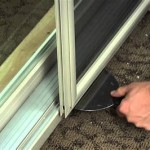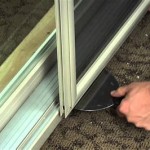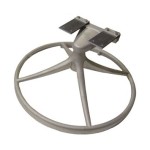```html
Sandstone Patio: A Guide to Design, Installation, and Maintenance
Sandstone patios offer a blend of natural beauty and enduring durability, making them a popular choice for enhancing outdoor living spaces. Its unique texture and warm color palette provide a visually appealing surface for relaxation, entertainment, and various outdoor activities. This article delves into the aspects of sandstone patios, from design considerations to proper installation techniques and ongoing maintenance practices, aimed at providing comprehensive knowledge for homeowners and landscape professionals.
Understanding Sandstone: Properties and Grades
Sandstone is a sedimentary rock composed primarily of sand-sized grains of minerals, rock fragments, or organic material cemented together. The composition of the cement and the types of grains influence the color, hardness, and porosity of the sandstone. Common cementing agents include silica, calcium carbonate, and iron oxide. These agents contribute significantly to the stone’s durability and resistance to weathering.
Different grades of sandstone are available, each possessing varying levels of hardness, porosity, and color consistency. Hardness is crucial, especially in high-traffic areas. Softer sandstones tend to wear faster and may be more susceptible to scratching and chipping. Porosity affects the stone's ability to absorb water, potentially leading to staining, algae growth, and freeze-thaw damage in colder climates. Selecting a sandstone grade appropriate for the intended use and local climate is essential for long-term performance and aesthetic appeal.
The color of sandstone varies widely, ranging from light beige and cream tones to rich reds, browns, and even purples. The color is determined by the mineral content, particularly the presence of iron oxides. Variation in color within a single batch of sandstone can add to the natural beauty of the patio, creating a unique and visually interesting surface. However, for a more uniform look, selecting sandstone with minimal color variation is advisable.
Design Considerations for Sandstone Patios
Effective patio design involves considering various factors, including the overall size and shape of the patio, its location within the landscape, the desired style, and the intended uses of the space. The size of the patio should be proportionate to the house and the surrounding yard. A patio that is too small may feel cramped, while one that is too large may overwhelm the space.
The shape of the patio should complement the architectural style of the house and the existing landscape features. Rectangular patios are a classic choice, but curved or irregular shapes can add visual interest and create a more organic feel. Consider the flow of traffic to and from the patio when determining its shape and placement. Pathways should be wide enough to accommodate multiple people walking comfortably.
The location of the patio should take into account factors such as sunlight exposure, privacy, and proximity to other outdoor features. A patio facing south will receive the most sunlight, while a patio facing north will be shadier. Consider planting trees or shrubs to provide shade and privacy. If the patio is located near a pool or garden, ensure that the design integrates these elements seamlessly.
Sandstone can be laid in various patterns, adding to the aesthetic appeal of the patio. Common patterns include running bond, herringbone, and basket weave. The choice of pattern depends on the desired style and the shape of the sandstone pavers. Larger pavers generally create a more modern look, while smaller pavers can be used to create intricate patterns.
Installation Techniques for Durable Sandstone Patios
Proper installation is critical to the longevity and stability of a sandstone patio. A well-constructed patio will withstand years of use and weathering, while a poorly installed patio may quickly develop problems such as uneven surfaces, loose pavers, and weed growth. The installation process typically involves several key steps.
The first step is preparing the base. This involves excavating the area to the desired depth and compacting the soil. A layer of compacted gravel is then added to provide drainage and stability. The thickness of the gravel base will depend on the soil type and the expected load on the patio. In areas with poor drainage, a thicker layer of gravel may be necessary.
A layer of bedding sand is then spread over the gravel base to create a level surface for the sandstone pavers. The sand should be screened and compacted to ensure a uniform thickness. The pavers are then carefully laid on the sand bed, ensuring that they are level and evenly spaced. A rubber mallet can be used to gently tap the pavers into place.
Once the pavers are laid, the joints between them are filled with polymeric sand. Polymeric sand is a mixture of fine sand and polymers that hardens when wetted, creating a durable and weed-resistant joint. The polymeric sand should be brushed into the joints and then wetted according to the manufacturer's instructions. Avoid over-watering, which can wash away the polymers and reduce the effectiveness of the sand.
Edging is an important component of patio installation as it restrains the pavers and maintains structural integrity. Common edging materials include plastic, metal, or stone. The edging should be installed before the pavers are laid, ensuring that it is securely anchored in the ground. The edging should be slightly below the surface of the pavers to prevent tripping hazards.
Maintenance and Care for Longevity
Regular maintenance is essential to preserving the beauty and extending the lifespan of a sandstone patio. Routine cleaning helps prevent the buildup of dirt, debris, and algae. Periodic sealing protects the stone from staining and water damage. Addressing any issues promptly can prevent minor problems from escalating into major repairs.
Cleaning sandstone patios can be achieved using a variety of methods. Sweeping regularly with a broom removes loose dirt and debris. Washing the patio with a mild detergent and water helps remove more stubborn stains. A pressure washer can be used for deep cleaning, but caution should be exercised to avoid damaging the stone. Use a low-pressure setting and avoid directing the spray at the joints, which can erode the polymeric sand.
Sealing sandstone patios is recommended to protect the stone from staining, water damage, and the effects of freeze-thaw cycles. Choose a sealant specifically designed for natural stone. Clean the patio thoroughly before applying the sealant, ensuring that it is dry and free of debris. Follow the manufacturer's instructions carefully, applying the sealant in thin, even coats.
Addressing cracks, chips, or loose pavers promptly prevents further damage. Small cracks can often be repaired with epoxy or stone repair compounds. Loose pavers should be re-set with fresh bedding sand and polymeric sand. If the damage is extensive, it may be necessary to replace the affected pavers. Matching the color and texture of the new pavers to the existing ones can be challenging, so it is best to purchase extra pavers during the initial installation for future repairs.
Protecting sandstone patios from harsh weather conditions can also extend their lifespan. In areas with heavy snowfall, consider using a snow blower or shovel to remove snow from the patio. Avoid using salt or chemical de-icers, as these can damage the stone. Instead, use sand or gravel to provide traction. Cover the patio with a tarp or plastic sheeting during the winter months to protect it from freeze-thaw damage.
Troubleshooting Common Sandstone Patio Problems
Even with careful installation and regular maintenance, sandstone patios can experience problems over time. Understanding common issues and their solutions allows for prompt and effective remediation, preserving the patio's aesthetic and functionality.
One common problem is weed growth in the joints. Polymeric sand helps to prevent weed growth, but weeds can still sprout up in cracks or areas where the sand has eroded. Manually removing weeds with a garden trowel is the most effective solution. Applying a weed killer specifically designed for use on patios can also help, but be sure to follow the manufacturer's instructions carefully.
Staining is another common issue, particularly from spills of oil, food, or drinks. Clean up spills immediately to prevent them from penetrating the stone. For stubborn stains, try using a stain remover specifically designed for natural stone. Test the stain remover on an inconspicuous area first to ensure that it does not damage the stone.
Efflorescence, a white, powdery deposit on the surface of the stone, can also occur. Efflorescence is caused by mineral salts dissolving in water and migrating to the surface of the stone. It is usually harmless, but it can be unsightly. Brush the efflorescence off with a stiff brush or wash the patio with a mild solution of vinegar and water.
Settling and uneven surfaces can develop over time, especially in areas with unstable soil. If the patio is settling significantly, it may be necessary to lift the pavers and re-compact the base. Adding additional gravel or bedding sand can help to level the surface. For minor unevenness, shimming the pavers with pieces of plastic or rubber can provide a temporary solution.
```
Marshalls N Sandstone Paving

Sawn Mint Sandstone Patio Kit Paving Slabs Stones Nustone

Grey Sawn Sandstone Paving Patio Pack

Why N Sandstone Is The Perfect Choice For Driveways Gv Paving

Buff Smooth Sandstone Paving Slabs London Stone

Laying Sandstone Paving How To Lay Slabs Marshalls

Camel Dust N Sandstone Infinite Paving

Buy Mint Fossil Sandstone Paving 4 Size Patio Pack 20 25m2

Natural Stone Patio Ideas Marshalls

Em 20mm Ivory Smooth Natural Sandstone Paving Patio Pack 15 3m²
Related Posts








